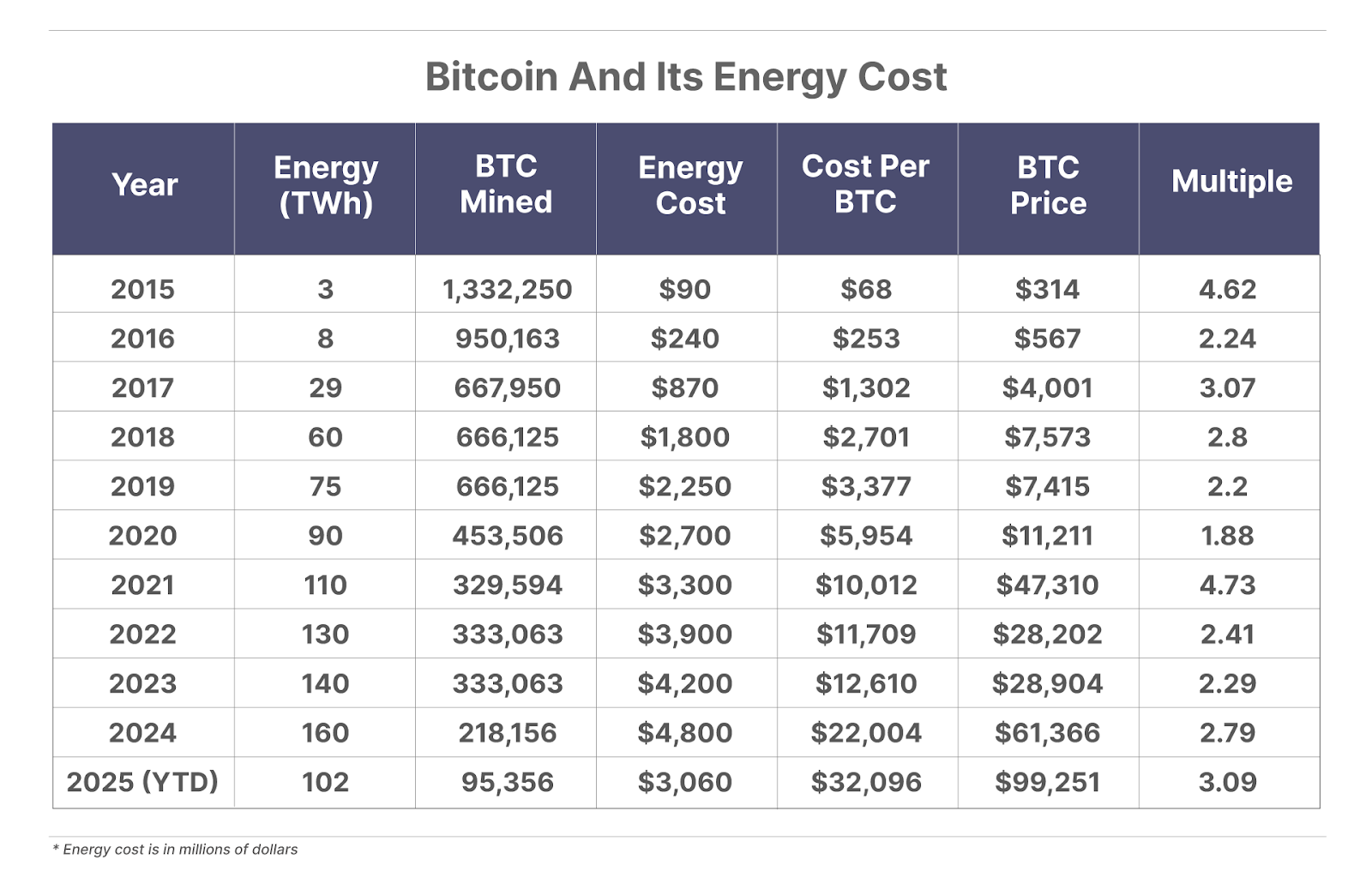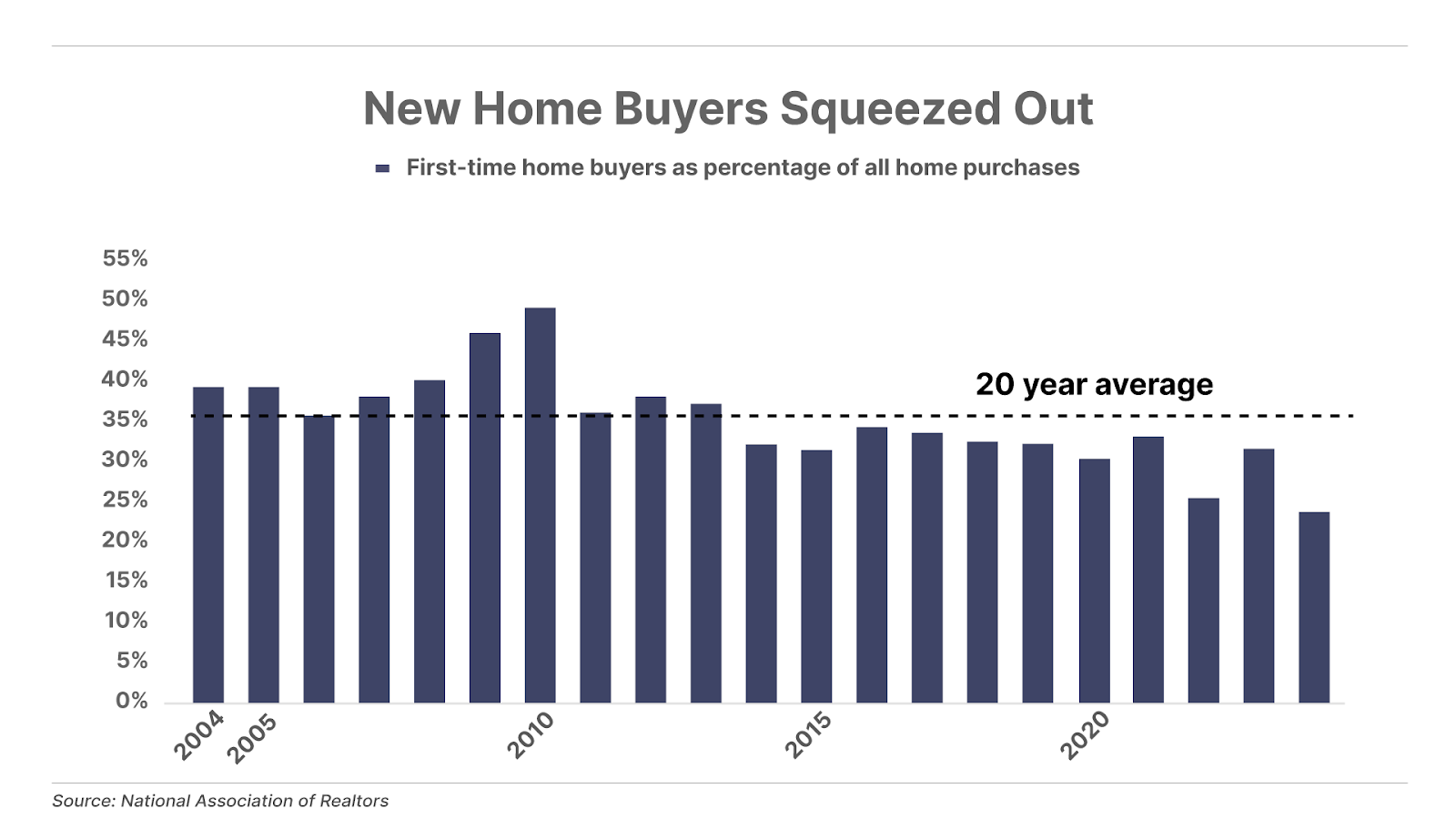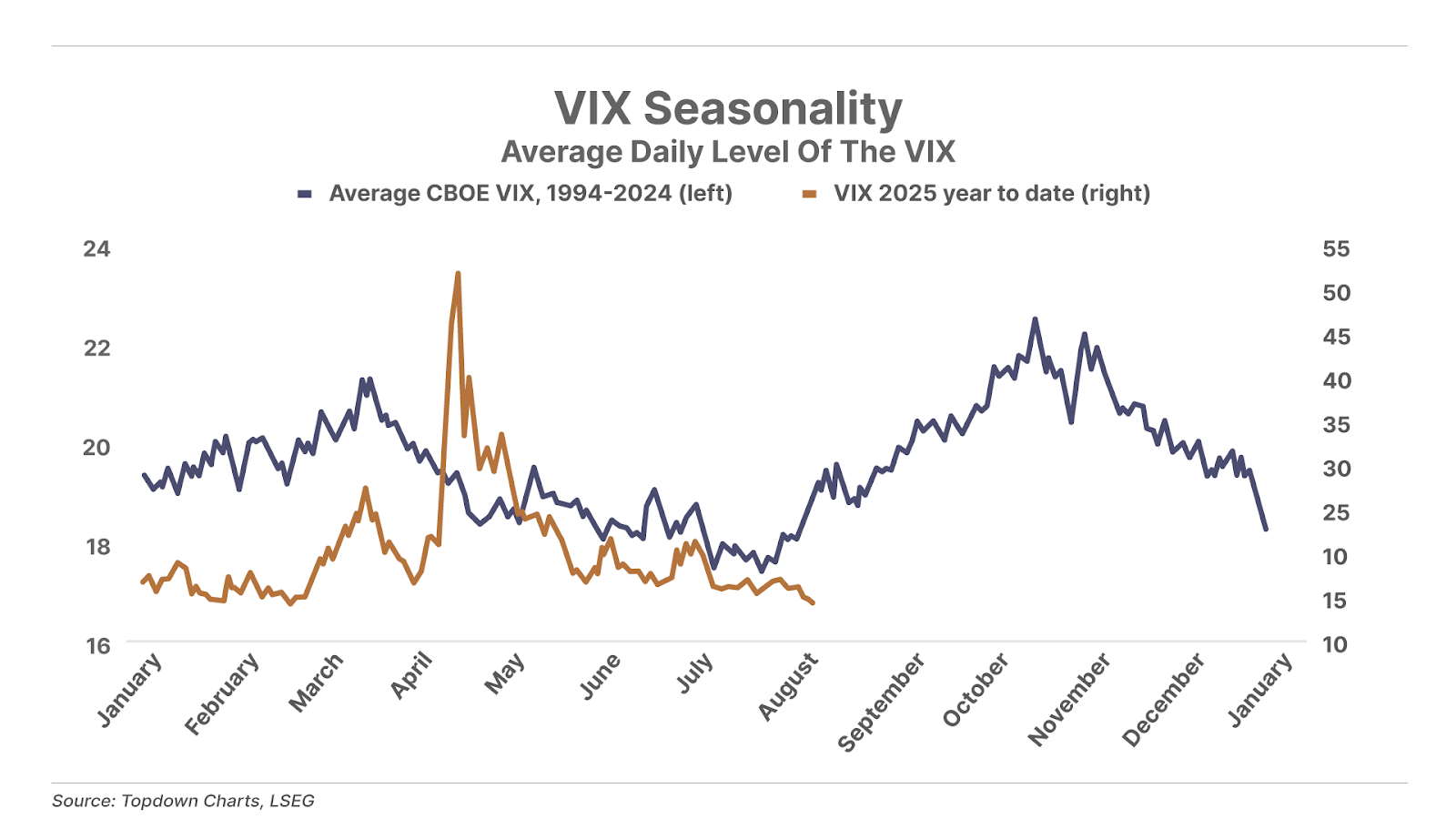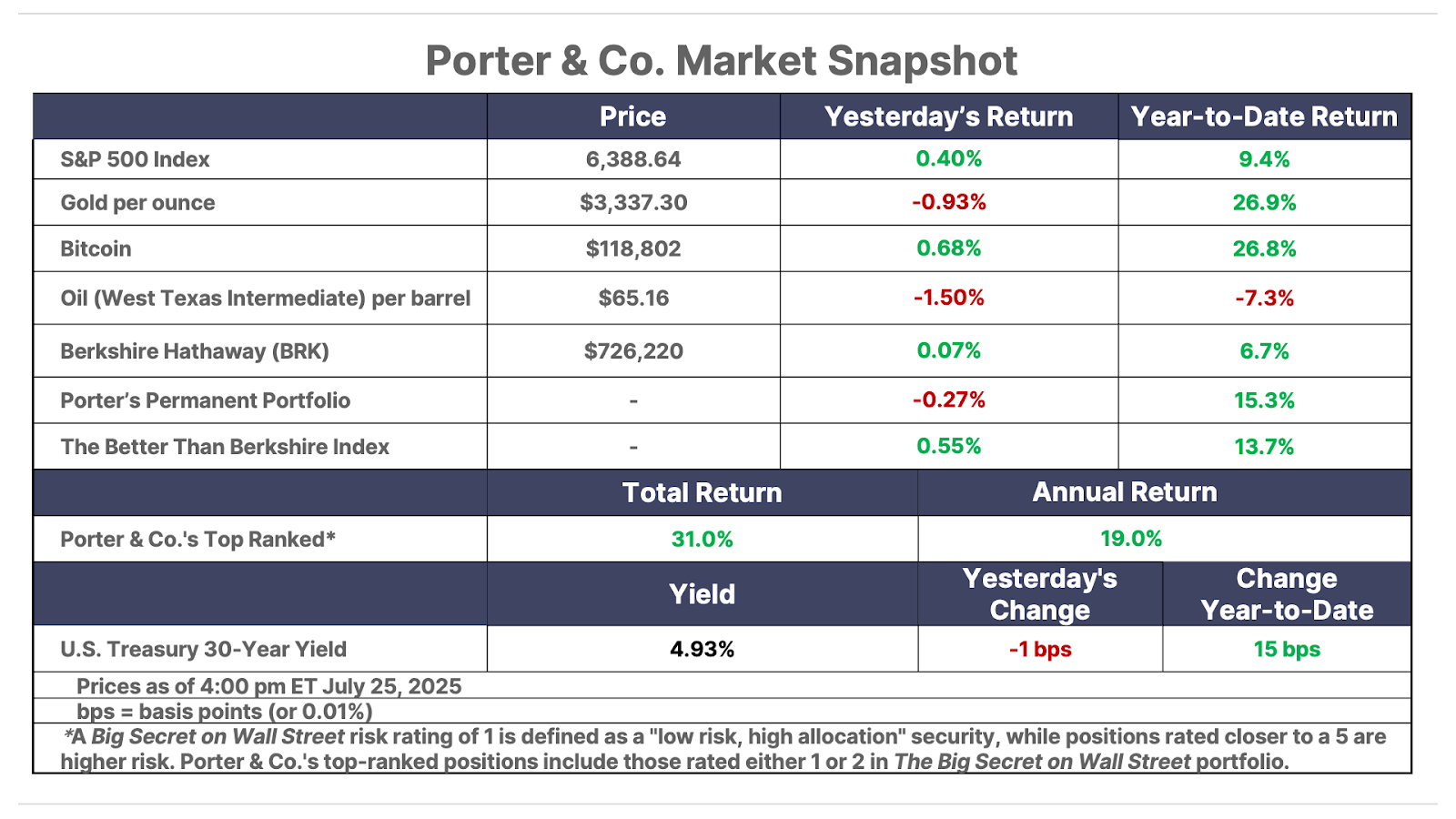Issue #86, Volume #2


The American Cattle Boom Provides A Clue
This is Porter’s Daily Journal, a free e-letter from Porter & Co. that provides unfiltered insights on markets, the economy, and life to help readers become better investors. It includes weekday editions and two weekend editions… and is free to all subscribers.
| The value of valuing Bitcoin… Standard economic metrics can predict Bitcoin’s price… Bitcoin is better than gold… Barbed wire and refrigeration changed the cattle business… New home buyers getting squeezed out… |
If you want to maintain your wealth in the next two decades, you must understand how to value Bitcoin.
Everyone, it seems, can understand why gold is valuable.
If I asked you to build a mental model to explain gold’s intrinsic value, you could easily come up with something rational. You’d understand that gold is relatively scarce. You’d understand why it has played a crucial role as a reserve currency for thousands of years. It’s natural money. It’s no one else’s liability. It’s proof of work. It’s relatively easy to transport and to safeguard. It can’t be counterfeited.
But ask someone who is an expert in gold to explain Bitcoin and you’re more likely to end up in an argument than to get a cogent answer.
Even more ironically, if you ask a Bitcoin “expert” to explain its intrinsic value you will get a bunch of nonsense. “It’s going to the moon!” they’ll tell you. “Divide the world by 21 million and that’s the intrinsic value,” they ape from what they read on some website, written by a 14-year old.
All nonsense.
Bitcoin’s price and its intrinsic value are understandable (and predictable) using standard economic metrics. And even if you’ve never understood the first thing about the internet or Bitcoin, you can easily understand (and predict) its price.
That’s the point of today’s Journal.
Like gold, Bitcoin is a natural money. It’s not the result of engineering and mining though. It is a beautiful expression of cryptology and computer power. It uses the power of computers and the Internet to solve the core functional problem of maintaining an accurate but distributed “ledger” in real time (the Byzantine generals’ problem). In doing so, Bitcoin has created the ultimate form of money: a secure way of exchanging virtually unlimited value between individuals using the internet, in real time, with almost zero cost.
Bitcoin is better than gold in every way: it’s more secure, it’s more private, it’s easier to use, and it enables virtually instant transfers, anywhere in the world, at almost zero cost.
Don’t think that matters?
Well, try sending $100 million in gold to someone around the world.
Or, perhaps even easier to understand, just look at one payment network: Visa.
In fiscal year 2024 (ending September 30, 2024), Visa processed a total of 233.8 billion transactions on its networks. That’s 7,400 transactions per second. Visa charged merchants $35.9 billion for these services and earned almost $20 billion in return.
That’s about nine cents of profit on every transaction. And Visa only captures 0.05% of U.S. GDP. If it were possible for Visa to capture 100% of the entire global economy’s GDP through the Visa network, Visa would earn around $500 billion per year. It’s hard to estimate because the Visa network is far from frictionless.
And there’s virtually zero innovation happening on Visa’s network, because it’s proprietary.
Meanwhile, Bitcoin has an army of developers working on innovations that we can’t yet imagine, including the development of entirely new forms of banking (like stablecoins). And that means, it’s rational to price Bitcoin at a multiple to its current intrinsic value.
As you can see, that’s been consistently true over the last decade. Bitcoin typically trades at over 2x its estimated energy cost.

What the data show over the last decade is the impact of Bitcoin’s growing scarcity, the increasing value of the Bitcoin network, and the increasing difficulty (energy requirement) to mine coins.
Since 2015, the energy cost per coin has grown from $90 to almost $5,000. (For this analysis, I’m assuming extremely low energy costs, like dedicated access to coal-fired, combined cycle plants – $0.03 per kwH.)
Bitcoin’s energy price multiple has averaged 2.92x over the last decade, with a standard deviation of 0.95. And, historically at least, these natural variations in price have signaled consistent opportunities. Multiples below 2x are signals for buys. Multiples above 4x have signaled periods of price mania.
The best way to understand Bitcoin and its intrinsic value is to compare it to other historic “land grabs” when limited resources have become geometrically more valuable thanks to technological innovation and massive capital investments.
My favorite metaphor for the Bitcoin boom is the American cattle boom.
Prior to 1860, nomadic cattle herds roamed freely on public domains. The cattleman’s cost was a cowboy’s lasso and horses. Clearing the land of indigenous peoples, buffalo herds, and natural barriers was a gritty, often violent endeavor, but the capital required to enter the market was negligible. Clear the buffalo, push out the Comanche, and the land was yours. Even as migration moved more people onto the plains, land remained very cheap. The Homestead Act of 1862 offered 160 acres for a small fee after five years of improvement.
But everything began to change as new innovations and enormous capital flows made the limited amount of range land massively more valuable.
The transcontinental railroad and then dozens of other connecting roads linked the vast ocean of prairie to the major East Coast markets. Railroads expanded from 30,000 miles in 1860 to over 160,000 by 1890! Think about the enormous amount of capital that was required to build them.
An even bigger change was barbed wire, patented by Joseph Glidden in 1874. It allowed ranchers to fence off their claims, ending the open-range chaos and enabling far more efficient breeding and protection of herds. By 1885, millions of miles of wire crisscrossed the West, boosting productivity but increasing start-up costs enormously. Barbed wire closed the range forever. And in doing so, it made the value of the most fertile ranches exponentially more valuable.
Finally, refrigeration technology, pioneered in the 1880s by companies like Swift and Armour, revolutionized beef transport, turning perishable meat into a global commodity that could be shipped to Europe without spoilage. By 1900, the beef industry made up 20% of America’s GDP. Our beef dominated global trade.
Suddenly, breeding cows, once a local affair practiced across shared ranges with almost no capital investment, became vastly more productive and valuable. The result? Capital from all over the world poured into the West to buy up the most productive ranches. What was once cheap prairie began trading at premiums far beyond its current yield of cattle.
Why? Scarcity played a starring role. The range land was carved up with barbed wire by the cattle barrens. These men understood that the land was finite, but the global demand for beef was infinite.
During boom times, like the cattle mania of the early 1880s, land traded at exorbitant multiples, with investors pouring in capital amid speculative fervor. Yet when harsh winters and overgrazing led to the “Great Die-Off” of 1886-1887, wiping out 90% of herds in some areas, the intrinsic yield – the land’s capacity to sustain cattle – formed a reliable floor.
To understand the metaphor, just replace “grazing land” with the Bitcoin network. It is also finite: limited to only 21 million coins.
Replace the cows with newly minted bitcoins.
Replace the cowboys, the winter hay, the barbed wire, the trains, the refrigerated box cars, and the slaughterhouses with ever-expanding bandwidth and constantly growing computational power, especially specialized computer hardware like application specific integrated circuits (ASICs) and parallel computer architecture.
Replace the foreign capital with previously stranded energy resources all around the world.
Replace global demand for beef with constantly evolving use-cases for digital currencies, further demand for a universal “reserve” digital currency.
This metaphor explains why the limited range of the Bitcoin network is worth more than the energy value of the coins it will produce this year.
And it explains why the Bitcoin network (and its tokens, which unlike cows are not consumed) are growing ever more valuable.
Early on, in 2009, costs were low – anyone with a standard computer (CPU) could mine, akin to free-range herding. But innovations soon made the network vastly more productive. The move to faster GPUs in 2010, then ASICs (Application-Specific Integrated Circuits) by 2013, paralleled barbed wire and railroads. These specialized tools required huge investments that made mining exponentially more efficient.
The parallels are striking: both systems revolve around a scarce resource whose value surges as innovations and capital investments boost both the efficiency of current production and the total value of the network’s output. Just as ranch land traded at multiples of its beef yield during booms, investors price existing Bitcoins at a premium to its energy-based “intrinsic” value, reflecting expectations of future rising cost of production and higher market value.
Judged through this lens, Bitcoin emerges not as a speculative fad, but as a digital asset echoing timeless economic forces.
As beef’s energy and capital inputs grew, the value of the system’s output soared. And U.S. ranch land became an economic powerhouse. In Texas, prime ranchland that cost $1 to $2 per acre in the 1860s fetched $10 to $20 by the 1880s, a 10x multiple. And that was back when the dollar was good as gold!
During the 1880s boom, fueled by British investment societies, ranches traded at multiples of their annual beef revenue – sometimes 5x to 10x. This multiple reflected optimism: more railroads, better breeds, endless demand. Yet in busts like the 1887 die-off, when blizzards killed 90% of herds in some areas, values reverted to the “intrinsic” floor – the land’s baseline capacity to regenerate cattle under normal conditions.
This dynamic – rising costs signaling value, innovations amplifying productivity, scarcity enforcing premiums – mirrors Bitcoin perfectly.
Nobody thought of ranch land or the increasing value of cattle production as a bubble. And Bitcoin isn’t a bubble either – at least not when it’s trading at normal valuations.
And the value of Bitcoin will continue to increase. ASICs, like fenced ranches, concentrate power, allowing miners to hash (compute) at rates billions of times faster than CPUs (free range cattle).
Currently the Bitcoin Network’s hashrate (the total computational power dedicated to mining) is measured in exahashes per second (“EH/s”) – an exahash (“EH”) is a unit of computational power equal to 1 quintillion (1018) hashes per second. A hash is a single attempt at solving the cryptographic puzzle required to validate transactions and create a new block in the Bitcoin blockchain. Currently Bitcoin Network hashrate is: 796 EH/s.
That’s 796 quintillion hashes per second.
You can think of this, metaphorically, as the total effort (labor + capital) engaged in “ranching” Bitcoin. This is an unimaginable amount of computing power (up 2,000-fold from a decade ago!). Metaphorically, this is akin to deploying millions of workers across vast ranches, each tirelessly performing calculations to “herd” new Bitcoins, with the scale of these efforts increasing the value of the “land” (the Bitcoin Network).
The amount of energy involved (as much as a small country would consume) assures the security of the network and forms the basis (the proof of work) for the monetary value of Bitcoin.
Every four years (210,000 blocks), the Bitcoin Network automatically enforces its growing scarcity by cutting the reward for mining in half: from 50 Bitcoin in 2009 to 3.125 Bitcoin in 2024. This mimics the rising value of ranch land post 1874. Miners must expend more energy (higher hashrates) for fewer coins, pushing production expenses up. And pushing up the value of existing Bitcoin higher.
Economic models like Charles Edwards’ Bitcoin Energy Value calculate fair price based on energy inputs: total Joules consumed via hashrate.
Historically, this has predicted price accurately, providing a baseline when the price dips. But, as in the cattle boom, Bitcoin’s market price often trades at a multiple of this energy value. That’s investors betting on future demand from global adoption.
And that’s not irrational.
So, if you’ve never bought any Bitcoin, it’s time to stop being wrong. If you want to invest in Bitcoin safely, just make sure you’re not paying more than 3x its current energy value. It’s basically at that price today.
And we’ll continuously update you on our current valuation in these pages.
A Historic Gold Announcement
Is About to Rock Wall Street
For months, sharp-eyed analysts have watched the quiet buildup behind the scenes. Now, in just days, the floodgates are set to open. The greatest investor of all time is about to validate what Garrett Goggin has been saying for months: Gold is entering a once-in-a-generation mania. Front-running Buffett has never been more urgent — and four tiny miners could be your ticket to 100X gains.
Be ready before the historic gold move. Click here to get Garrett’s Top Four picks now.
Three Things To Know Before We Go…
1. A weekend win for Trump. On Sunday, President Donald Trump announced that the U.S. had reached a trade deal with the European Union. The deal reportedly imposes a 15% tariff on most European goods entering the U.S., including automobiles, while imposing no tariffs on U.S. goods going to Europe. Trump said the EU also agreed to purchase $750 billion of U.S. energy and invest $600 billion into the U.S. above previous commitments. The Trump administration is also expected to extend its August 12 tariff deadline with China for another 90 days, in hopes of reaching a similar deal with its largest trade partner.
2. Deep freeze in U.S. housing market. The share of first-time home buyers (among all home buyers) has plunged to a record low of 24% versus a 20-year average of 35%. New home buyers have been squeezed out of the market by a combination of record high prices and mortgage rates stuck above 6.5%. Without relief on prices or rates, America’s housing market will remain frozen.

3. Volatility could be poised to rebound. The CBOE Volatility Index (VIX) has eased significantly after jumping above 50 in April amid tariff-driven uncertainty. Now hovering near a five-month low around 15, the VIX reflects a calmer market environment. However, history shows that volatility climbs heading into the fall – a seasonal pattern suggesting that another bout of market turbulence could be on the horizon.

And One More Thing… Today’s Poll – The VIX
Historically the VIX has risen above 22 on average every fall since 1994. Currently around 15, after having shot up to more than 60 in April…
Tell me what you think: [email protected]
Good investing,
Porter Stansberry
Stevenson, Maryland


Please note: The investments in our “Porter & Co. Top Positions” should not be considered current recommendations. These positions are the best performers across our publications – and the securities listed may (or may not) be above the current buy-up-to price. To learn more, visit the current portfolio page of the relevant service, here. To gain access or to learn more about our current portfolios, call Lance James, our Director of Customer Care, at 888-610-8895 or internationally at +1 443-815-4447.
